Malocclusion / indentation
Apparently not also traumatic dentist experiences are responsible for dental phobia but also an indentation problem called malocclusion. Almost every odontophobic patient has a kind of malocclusion recognisable from a dentist. Through this finding it is possible to gain an other point of view about the development and therapy of dental phobia.
Malocclusion is a term to describe a complex functional dental- maxillo- and muscular disease. In a normal case all the different parts form a harmonic functional unit. Already small chances can disturb this balance and lead to pain, dizziness, tension and postural deformities. Consequences of different types of malocclusion could be ear- muscle ache, jaw popping or migraine.
The 3 Appointment Therapy aims to correct, if necessary, your dental system so that it can become almost perfect. During the first appointment (T1) you will receive information about these correlations in relationship to your individual situation. Why? Because there could be a connection with your dental phobia. By considering these factors during the 3 Appointment Therapy we can help you become after the surgery a patient who can have a normal dental treatment. The phobia diminishes and complains like head-, backache or tension will disappear.
In the following pictures you can see possible malocclusion problems like cross bite, crowding, mandibular protrusion, absence of canine guidance and overbite.
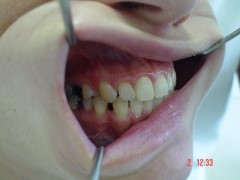
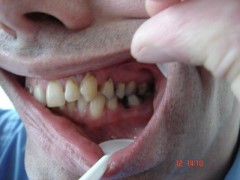
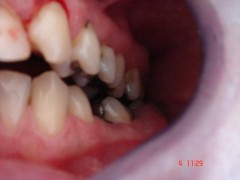
The next pictures show a joint head, which is in a wrong or forced position because of the indentation. Consequences are ear-, muscleache, jaw popping or „migraine“.
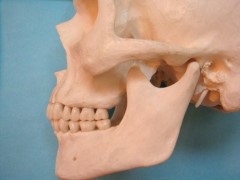
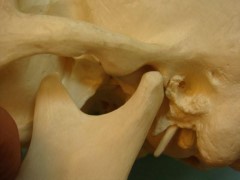
On the left picture you can see teeth which looks harmonic to a layperson. What you can not see from the picture is that the joint head is not situated in the socket. Furthermore in the enlargement on the right side you can notice that the joint head crash into the ear area.
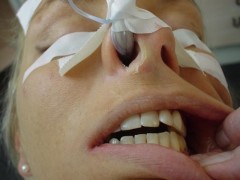
This picture shows a patient under general anaesthesia who can usually bite well. Since the musculature is completely relaxed, it is possible through the Dawson grip to see that in everyday life the joint head was not in the socket. After the correction of the dental system, the migraine, of which the patients had been suffering for years, had spontaneously disappeared.


